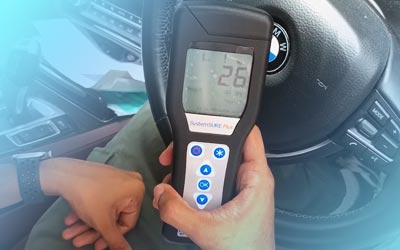In recent times since COVID-19, the ATP tool has been widely used for monitoring the efficacy of cleaning immediately after disinfection. It has this name as it is based on measuring Adenosine Tri Phosphate. ATP is an indicator molecule for the biological and organic residues to test surface hygiene.
There is a grave misunderstanding in the industry that the ATP monitoring system is a “germ test” when it is really only a “surface dirt test.”
Background
In response to the need for objective methods of assessing the efficiency of cleaning in healthcare, Food and Beverage facilities, schools or other settings, the ATP monitoring test is often adopted as it is a rapid real-time approach for screening the presence of residual organic matter to validate the efficacy of cleaning and sanitation.
Testing for Effective Disinfection
Although ATP monitoring testing is a well-established and useful method for assessing surface hygiene; it cannot be used as a replacement for traditional microbiology tests to assess the efficacy of disinfection. To assess disinfection, conventional microbial tests are needed and count the actual numbers of colony forming units (CFU’s) on a small area the surface in question.
ATP monitoring can detect ATP from all living cells and organic residues, or a combination of both, so it is not inherently indicative of the numbers of bacteria on a surface. ATP monitoring works by measuring the amount of light or luminescence emitted from organic material. It does NOT quantitatively count microorganisms.

RLUs measure the overall cleanliness of a surface rather than the number of bacteria. The RLU reading is directly proportional to the amount of ATP collected from the sample. A high RLU reading indicates a large amount of ATP at the tested surface. This in turn indicates improper cleaning and the presence of organic residues.
Proper cleaning results in less ATP at the tested surface. Less ATP results in less light output during the bioluminescent reaction and consequently, a lower RLU reading. This indicates a more thorough removal of organic residues by cleaning and sanitation.
Interpretation of Results
ATP monitoring still has a role in providing first hand, real time assurance that cleaning and sanitation regimes are being carried out satisfactorily. The levels of acceptable cleaning varies for various industries. Some cleaning contractors are using a high ATP hurdle numbers to impress clients and “PASS” their contractually imposed cleaning standards.

However, ATP results should not be interpreted as surrogate indicators for the presence of microbial pathogens, they are not.
Assessing Germs and Disinfection Efficacy – There is a Difference!
The use of the appropriate testing methodologies will be based on what you are actually trying to determine:
- If you are trying to assess whether a surface is merely clean or dirty and want to go just beyond visual inspection, then ATP monitoring might be the method of choice.
- If you are trying to assess viable microbial load, then it can only be determined using standard microbiological methodologies such as swab sampling which includes collection of the surface samples and incubation.
If seeking empirical evidence on the efficacy of disinfection, then ATP monitoring can never be a substitute for quantitative plate counts and bacterial analysis, even though the temptation is there to use it as such in this age of expediency.




